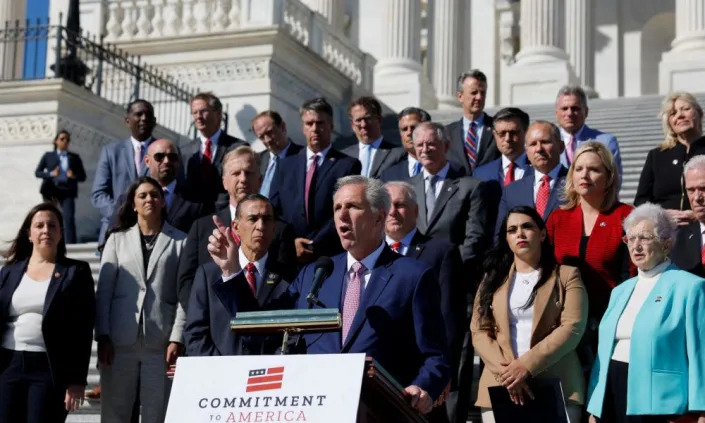AZ Central – The Arizona Republic
‘We are going to be homeless’: How mobile homeowners are being forced out in metro Phoenix
Catherine Reagor, Juliette Rihl and Kunle Falayi, – October 22, 2022
Homeowners in mobile home parks across metro Phoenix are getting evicted.
Many own the mobile home but rent the small lot it sets on.
“This is more than just a notice to get out,” said Priscilla Salazar, whose family has lived 11 years in the Weldon Park mobile home community near 16th Street and Osborn Road. “We are going to be homeless.”
Like Valley apartments, some mobile home park owners are raising rents when leases expire and evicting tenants who can’t pay.
In other cases, owners are shutting the parks down so the land can be used for something else, including housing that mobile homeowners can’t afford. Some mobile home park buyers are clearing out tenants and flipping the infill sites for big profits.
Mobile homes have long been one of the most affordable housing options for metro Phoenix residents, but the growing number of parks closing or becoming pricier is putting many residents in a bind. New affordable parks aren’t being built, and many mobile homeowners can’t afford to live elsewhere or move their homes to other communities in the Valley, alarming housing advocates and prompting government officials to seek solutions.
In mid-September, tenants of Weldon Court received a notice that their park would be closing. It had been sold for $5.48 million to an investor from California just days before. Tenants were given six months to move out.

“This is our little mini Phoenix. This is our community,” said Salazar, whose children have grown up in the park. Many tenants are low-income families or seniors on fixed incomes.
Residents of Weldon Court and two other Valley mobile home parks that are evicting tenants or raising rents recently protested at the Arizona Capitol and Phoenix City Council chambers. The other two parks with residents fighting their landlords are Las Casitas — which is now called Beacon — at 19th Avenue and Buckeye Road, and Periwinkle, at 27th Avenue and Colter Street.
Mobile home park buying spree
Like with affordable Phoenix-area apartments, investors are snatching up mobile home parks in the Valley.
Since the beginning of 2021, at least 30 trailer, manufactured and mobile home parks have sold for almost $260 million, according to an Arizona Republic analysis of real estate records.
The Valley has been a hub for factory-built homes since after World War II. Many GIs returning home headed to the Southwest. Some hitched a travel trailer to their cars and put down roots and wheels in metro Phoenix.
Most of the metro Phoenix mobile home parks to sell during the past five years are prime infill sites.
The mobile home park buying and closure spree comes as Arizona is facing a shortage of 270,000 homes.
“It’s horrible for people who own their mobile home and have been living in a park for decades,” said Pamela Bridge, director of litigation and advocacy at Community Legal Services. “Investors are raising rents and our office is seeing so many more evictions in older parks.”
She said many longtime residents in Phoenix-area mobile home parks have paid off their homes and made improvements on them, but they can’t afford to move them and can’t find other parks where they can rent a space.
“These people have done nothing wrong,” she said. “We need to leave these mobile home park owners in stable situations.”
Jerry Suter, an 83-year-old veteran who has lived at the Periwinkle Mobile Home Park for 28 years, planned to live out the rest of his days there. He called the park’s closing “devastating” and “traumatic.” With an income of $1,290 in Social Security payments each month, he said he can’t afford to live anywhere else.
Grand Canyon University bought the park six years ago, decided to close it and plans to build student housing.
“They’re going to literally have to drag me out of there,” Suter said. “I’m not giving up my trailer.”
Phoenix has about 20,000 mobile homes, which represents about 3.1% of all of the area’s homes, according to the U.S. Census Bureau. That’s far more than the number of mobile homes that can be found in cities with similar populations, including Houston, San Diego and Philadelphia.
But the supply of mobile homes and parks is shrinking. About 5% of Phoenix homes were in mobile home parks in 2018.
The rapid disappearance of mobile home parks is due, in part, to transactions like this: In 2018, homebuilder Taylor Morrison bought the former Scottsdale Wheel Inn Ranch RV and Mobile Home Park, where residents were evicted by another owner a few years before. Similar scenarios with investors buying the parks, evicting the tenants and then selling to a developer are happening across metro Phoenix.
The Phoenix city manager’s office recently created a task force to research potential solutions to the mobile home dilemma. The task force will present its findings to the City Council next month.
District 8 Councilmember Carlos Garcia, whose district includes Las Casitas mobile home park, said he wants to find a way to keep people in their homes or, if the evictions move forward, find new places for the residents to live.
“To me, all options are on the table,” Garcia said. “Priority is to make sure these families don’t end up on the streets.”
Finding more time: GCU-owned mobile home park extends deadline before forcing residents to leave
Few choices for mobile homeowners

Residents of Beacon mobile home park were given a new lease in late September. Their rent will increase by 88% over the next four years, it said.
Elvia Ramirez, who lives in the park with her children, started looking for somewhere else to move. But the single mother of four, who works as a receptionist and has lived in the park since she was a teenager, hasn’t been able to find something within her budget.
“Even the mobile homes are too expensive now,” said Ramirez, 33. If she doesn’t secure a new home, she said, she and her kids will probably have to move in with family.
The median price of a U.S. mobile home is now $61,400, according to a LendingTree study. That’s up 35% since 2016.
Many mobile homes are several decades old, and some are even trailers, the oldest type of mobile house. Some of the parks in metro Phoenix sold since early last year are more than 70 years old.
Many parks won’t rent to owners of older mobile homes because their houses may not be up to code. Also, some with additions can’t be moved without damaging them.
The typical rent for a mobile home lot in the Phoenix area was about $400 to $500 a month in 2019, according to housing advocates. Now, rents are rising above $1,000 per lot in some Valley parks.
Help available to mobile homeowners
Arizona has a fund to help, but some mobile homeowners don’t hear about it, and others cannot fully benefit from it because of the age of their residences.
For some owners, the fund isn’t enough to help them move, so they take less than $2,000 in state funds to walk away from their mobile home.
Under Arizona law, mobile home park residents who are displaced because of redevelopment are eligible to receive up to $12,500 from the state’s relocation fund.
But many of the mobile homes are so old, they cannot be moved to another park, either because they would fall apart or because they don’t meet current wind-resistance codes.
Residents who have to leave their homes in place because they can’t be moved can get only $1,875 from the fund, which is managed by the Arizona Housing Department.
Many residents and housing advocates said more help is needed.
“Now I have to abandon my home and give it to the university,” Suter said. “What am I gonna buy for $1,875?”
Patricia Dominguez said her family recently spent $4,000 on a new roof for their home — more than double what they will be reimbursed if they abandon it.
“What they’re offering is nothing compared to the love, and the blood, and the sweat and tears that we’ve all put into our unit,” said Dominguez. Her mother and sister, Salazar, live in Weldon Court.
Community organizer Sylvia Herrera, who is working with residents of all three parks to get more time and money before eviction, said the state relocation fund is “deceiving” because many people can’t move their trailers and therefore can’t access the full relocation amount.
“These are not really resources if you can’t qualify,” she said.
Tara Brunetti, assistant deputy director of the Arizona Department of Housing’s Manufactured Housing Division, said park owners must notify the agency if they plan on closing a park and give tenants 180 days’ notice.
“That gives us time to reach out to the residents” and offer them help, she said. “We are definitely seeing more applications for the fund now.”
The fund has more than $7.6 million to help mobile home park residents.

The state program does offer more money than it did five years ago, but it took a legislative move to get the increase.
Mobile homeowners and their advocates are hoping for a different kind of fix.
Some cities, including Portland, Oregon, and Austin, Texas, have updated their zoning laws to help prevent mobile home residents from displacement.
A 2018 Austin city ordinance zoned existing mobile home parks as a “mobile home residence district.” That means if the landowner wanted to use the land for a different purpose, they would need City Council approval to change the zoning.
Portland passed a similar ordinance the same year.
In 2018, when a new owner began evicting longtime residents from the Tempe Mobile Home Park near Arizona State University, the city of Tempe stepped in and helped get rent concessions from the landlord. Tempe also set up meetings for the tenants to negotiate with the new owner and get aid from the Arizona Housing Department.
That former mobile home park is now high-end apartments.
“I believe there should be laws or community work in cities and counties that come up with long-term solutions for people in the park. These people are a vital part of our community,” said Bridge, of Community Legal Services. “We want their children to remain in schools and for the parents to be able to get to their jobs nearby.”
Out-of-state buyers
In 2018, investors spent more than $225 million on 40 metro Phoenix mobile-home parks. It was a record year for mobile home park sales in the Valley.
Then, big Wall Street-backed investment firms were behind most of the sales. Now, big and small investors are driving the trend, but almost all are out-of-state buyers.
The biggest Phoenix-area mobile home park sale since the beginning of 2021 was $84.5 million for the Royal Palm park in Phoenix at 19th and Dunlap avenues. Property records show Chicago-based Continental Communities is the new manager.
Bridge said she has come across several cases of new out-of-state mobile home park owners not giving tenants or the state enough move-out notice.
Mobile home evictions are tracked differently than other rental evictions, and the data to tally the total isn’t available in Arizona.
“Because of the housing crisis, there is no affordable housing. Trailer parks are the most affordable housing right now that you can find,” Herrera said. “People are just trying to retain that, trying to hold on to living in mobile home parks.”
Coverage of housing insecurity on azcentral.com and in The Arizona Republic is supported by a grant from the Arizona Community Foundation.







